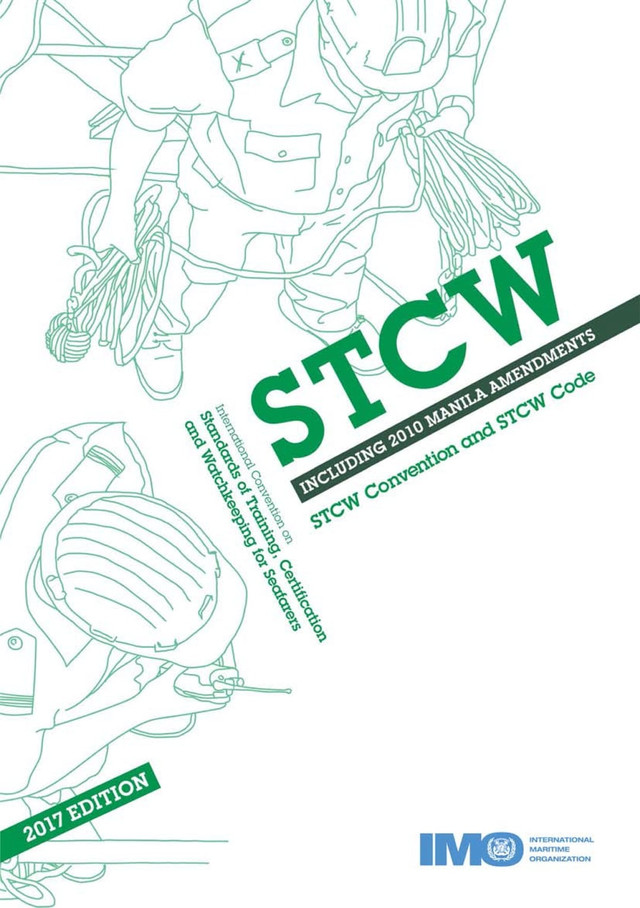What is the STCW Code?
A Simple Guide for Modern Seafarers
If you’ve ever looked into working at sea, you’ve come across the term STCW. It comes up again and again, and for good reason. STCW certification is the foundation for any maritime career, but figuring out what you actually need can feel overwhelming.
Let’s explore the requirements together….

What Does STCW Stand For?
STCW stands for Standards of Training, Certification, and Watchkeeping. In simple terms, it’s a standard that sets the minimum level of training every seafarer must have to work safely and legally at sea.
The framework was created by the International Maritime Organization (IMO) in 1978 and updated in 2010 under the Manila Amendments. Its purpose is straightforward: to make sure that no matter where you come from, if you’re working on a ship, you’ve been trained to the same international standard.
This means
- Everyone onboard knows how to respond in an emergency
- Employers can trust that crew members meet a recognised level of competence
- Training is conducted to an internationally accepted standard
STCW is what makes maritime work possible on an international scale. It ensures that your training is not only valid in your home country but also recognised by ships and employers all over the world.

Who Needs STCW Certification?
If you’re planning to work at sea in any professional capacity, you’ll need STCW training.
These requirements apply broadly across the maritime industry; from cargo vessels and offshore supply ships to ferries, yachts, and cruise ships.
Mandatory Practical Courses (In-Person)
Before joining a vessel, most seafarers must complete Basic Safety Training, which includes four practical courses delivered at an accredited training centre.
Together, they form the foundation of safety awareness for life at sea:
-
Personal Survival Techniques (PST) – This course prepares you for emergencies where abandoning ship is necessary. It covers donning lifejackets and immersion suits, boarding survival craft, launching and righting liferafts and survival techniques in the water.
-
Fire Prevention and Fire Fighting (FPFF) – This course teaches fire prevention and firefighting procedures. It also involves live fire drills in controlled conditions, where trainees learn how to use breathing apparatus and extinguish different types of fires.
-
Elementary First Aid (EFA) – Focused on immediate care in a maritime environment, this course introduces basic life support, CPR, treatment for shock, bleeding, fractures, burns, and the safe movement of casualties.
-
Personal Safety and Social Responsibilities (PSSR) – This module introduces seafarers to safe working practices, pollution prevention, teamwork, communication, and understanding the unique demands of shipboard life.
These courses involve both classroom learning and practical drills. They are designed to be realistic, so expect physical activity, teamwork, and scenarios that simulate real emergencies.
Certificates are typically valid for five years and are a legal requirement under most flag states before a seafarer can join a vessel.
Additional Security STCW Courses (Available Online)
Depending on your role and the type of vessel, you may be required to complete additional modules that focus on security.
Unlike the Basic Safety Training courses, these can often be completed online, making them faster, cheaper and more convenient to obtain.
- Security Awareness (SA)
This course is required for all seafarers. It provides a basic understanding of the current security environment, the importance of maintaining awareness, how to recognise suspicious behaviour, and what to do in the event of a security threat. It ensures that every crew member, regardless of rank or department, can contribute to a safe and secure shipboard environment.
- Designated Security Duties (DSD) – If you are assigned security responsibilities on the vessel, this course is mandatory. Topics include monitoring restricted areas, controlling access to the ship, conducting searches, handling security equipment, and assisting in implementing the Ship Security Plan.
- Ship’s Security Officer (SSO) – If you’re fulfilling the role of Security Officer on board, you need to have completed an approved Security Officer course, this covers more of the legal and record keeping aspects of security onboard, as well as planning drills and training.
STCW certification isn’t just a box to tick – it’s the entry ticket to a maritime career.
Employers look for it as proof that you’re trained, safety-conscious, and ready to take responsibility at sea. Without the right certification in hand, you won’t be able to work onboard.
At Seafarer.Online, we make training faster, more accessible, and fully compliant.
Our Security courses are approved by the Norwegian Maritime Authority, ensuring that your certificate is recognised internationally and accepted by employers and flag states worldwide. Our courses are accepted by the MCA, Panama, Liberia and many more!
Whether you’re joining your first ship or renewing your documentation for a new contract, our online STCW courses help you stay prepared and competitive in a fast-moving industry.
Get Your Norwegian Maritime Authority-Approved Certificate Today
If you have any questions regarding the STCW code or if our courses are right for you, please get in touch with the team contact us
